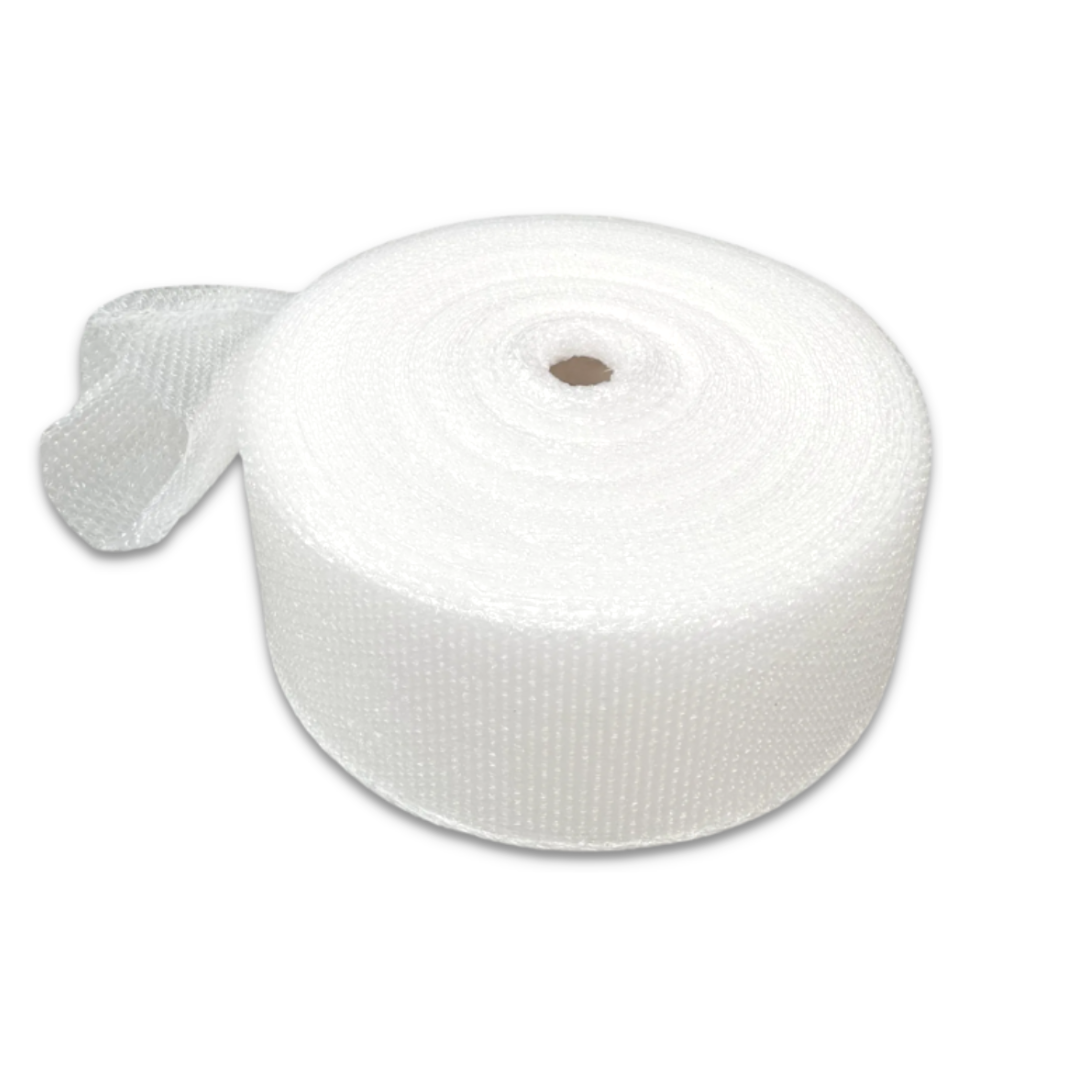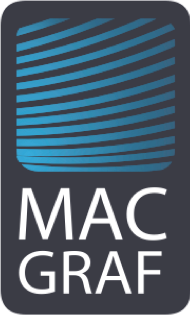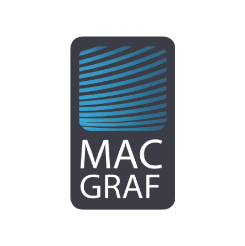Packaging materials for the interior industry
Przygotujemy dla Ciebie ofertę szytą na miarę Twoich potrzeb!
Umów się znaszym doradcą
Specifics of the home decor industry
Home décor products comprise a whole cross-section of different types of larger and smaller items that are often delicate, irregularly shaped and easily scratched or broken. If you are a manufacturer of just one type of product, things are a little easier, but if you produce many of them or run a shop with a wide range of products such as lamps, pictures, cushions, ceramics, mirrors, furniture accessories, etc., packaging can be a challenge.
Careful protection of each product is key to minimising parcel damage in transit and complaints, which often generate considerable costs for the business. So which packaging materials should you bet on?
Bubble wrap for the home decor industry - cushioning and effective protection

Bubble wrap provides excellent protection when transporting and storing a variety of home décor products.
However, there are some products that you will not pack effectively in paper or scrapbooking:
- mirrors
- lampshades
- lamps
In turn, a well-chosen bubble wrap supplier can make your choice eco-friendly. The bubble wrap we produce at Mac-Graf is fully recyclable and, on top of that, effectively protects products. Which type of this material should you choose for your business?
Let’s start with the level of protection that the different types guarantee.
Types of bubble wrap
- Bubble wrap B1
This is a popular type of film among our customers. It’s a two-layer material that is very fine, making it have great adhesion. Great for securing small, lightweight items.
- Bubble wrap B2
It is also a two-layer film, but with a reinforced weight, so you can successfully pack medium-weight products such as smaller lamps.
- Bubble wrap B3
Three-layer film with an extra layer to prevent air bubbles from flattening. Suitable for packing heavy products such as smaller furniture.
- Bubble wrap B4
Very airtight, tear-resistant, it will work well for packaging products with sharp edges.
- Laminate bubble wrap and PE foam
This is the highest level of protection, as it is a combination of PE SONG foam with bubble wrap, aluminium, HDPE or polyethylene. Laminate is often used as the main layer to protect large furniture.
Bubble wrap packaging - reduce packaging time and process costs
Bubble wrap can take many forms, and classic rolls are just one of them. Most often, our customers place it on special unwinders which make it easier for the warehouse worker to work with the material. However, depending on the type and size of the products to be packed, you can opt for a confection made of bubble wrap, which in the case of many of our customers has significantly facilitated work and shortened the time of the packing process, which ultimately becomes a significant saving. In addition, this way you can noticeably reduce the amount of material used. What options do you have?
At Mac-Graf, we can produce bubble wrap in various forms to your specifications:
Perforated rolls
A classic roll of bubble film of your choice in width and roll, but with perforations inserted. This means that the worker does not have to cut the film, but simply tears off the piece of film designated by the perforations. This helps to control the amount of material used.
Possible dimensions:
- Width: 100 - 1800mm
- Length of one perforated section: 250mm - no restrictions
You can also order a roll with the perforation inserted transversely. This is an alternative for sheets that do not fit within the working range of the format.
Bubble wrap bags

If you are packing items of similar size, this is a great substitute for a roll, as you do not need to wrap the product with film (relying on the employee’s decision on the number of wraps), but simply put it in the pouch. If you choose pouches with an adhesive strip – no tape is necessary either. This is one of the most popular optimisations among our customers.
In the home décor sector, they are ideal, for example, for packing cushions, which, when wrapped too tightly in stretch film, can deform, which can lead to customer dissatisfaction. They will also make it easier to pack small elements which are used to assemble a given product or which are a complement to it.
Possible dimensions:
- Depends on the chosen material thickness and form of delivery
- They can range from 150 to 1,600mm in height and the opening can be from 85 to 3,200mm
You can discuss your specific need with our advisor.
We deliver the bags to our customers wound on a roll (thanks to the perforation, you can simply tear them off, so you can also put such a roll on the unwinder) or in the form of parcels.
Bubble wrap sheets

This is a form of film cut into specific sized pieces that look more aesthetically pleasing than film cut by a worker. This form also allows you to standardise the amount of material used. It is also easy to retrieve the material then. We deliver to our customers in the form of parcels.
Possible dimensions:
- Width: 150 to 1250mm
- Length: from 150 to 3000mm
Bubble wrap sleeves

Great form when one of the dimensions of your product varies according to its type. Explaining the point of this material pictorially, let’s assume you are packing cushions that are the same width but different lengths. In this situation, you insert the cushion from one side (the sleeves have two openings) and cut the length from the roll that you happen to need. In this way, one size of sleeve will allow you to pack different products.
Then all you have to do is secure the product on the sides with packing tape and you’re done!
Possible dimensions:
- Depends on the material thickness selected
- Width: from 80 to 1600mm
- Length: from 25 to 100m
Half-sleeves made of bubble wrap
A specific product that is often chosen by customers who, because of, for example, the production method, can put the product in the film from the side. This is because the half-sleeves are sealed on one side. This is also a form of optimisation that speeds up the packaging process. The half-sleeves are wound onto a reel.
Possible dimensions:
- Width: from 80 to 1650mm
- Length: from 25 to 100m
Large bubble film Fill & Wrap

Bubble wrap is a versatile product – it will effectively cushion shocks and protect your product from impact and is suitable for packing most products. In addition, we can produce bubble wrap for you in any colour if you wish.
If you also use bubble wrap to fill empty spaces in your parcels or want to standardise your packaging system in terms of recycling (you don’t want to mix too many materials that can’t be disposed of in one waste bin), you can confidently reach for the NEW at Mac-Graf – FILL & WRAP large bubble wrap. This is a bubble wrap with bubbles 3 times larger than in classic wrap. Thanks to this, using the same size piece of foil, you will fill more space and additionally provide effective cushioning for the products you are sending.
Possible dimensions:
- Roll width: from 300 to 2000mm
- Roll length: from 10 to 50 linear metres
Polyethylene foam for packaging in the interior industry - flexible and waterproof
Another material that we produce at Mac-Graf and that our home décor customers like to use is PE polyethylene foam. It is a material that is versatile due to a number of features that are great for protecting goods in transit.
Polyethylene foam is:
- Flexible
This ensures that it returns to its original shape when the pressure stops.
- Waterproof
In the case of the material used for decoration products such as cushions or paintings, this is an invaluable quality.
- Lightweight
This ensures that it does not add to the weight of the parcels being sent and does not incur additional postage costs.
- Chemically inert
This ensures that it does not affect the structure of the packaged products in any way.

Polyethylene foam can vary in thickness:
- from 0.8mm to 15mm
This is a key parameter in its selection. Thinner foam is the lightest and most flexible, but it absorbs pressure to a lesser extent. Pear foam is better at absorbing pressure, but is slightly less flexible. The choice of its type depends on the type of products being packaged. If you want to wrap products in polyethylene foam, e.g. ceramics or paintings, a thinner version will suffice. If, on the other hand, you want to wrap heavy products with it, then go for the thicker versions.
- Hint
Polyethylene foam is great for protecting parcels stacked on a pallet from getting wet, which can be particularly acute in autumn and winter. All you need to do is lay a suitable sheet of PE foam on the pallet before placing the boxes on them.
Although cardboard is often used for this purpose, the difference between it and foam is important – PE foam is waterproof, while cardboard or cardboard can get wet.
We can also produce the polyethylene foam for you in any colour. This is an interesting idea for product packaging that, for example, refers to your brand colours. If you need a warning symbol on the foam, for example, we can also do this for you.
For this material you can order:
- classic PE foam roll
- PE foam roll with perforations from 100 to 1800mm wide and min. 250mm
- laminate of PE SONG foam and bubble, aluminium, HDPE or polyethylene foil
- PE foam sheets in widths from 150 to 1250mm and lengths from 150 to 3000mm
- PE foam bags with a height between 150 and 850mm and an opening between 100 and 1200mm
As with bubble wrap, the form fulfils the function of optimising storage time and giving greater control over the amount of material used.

Stretch film for securing shipments in the home décor industry
Stretch film is one of the most popular packaging products in almost every industry. It is used to secure shipments on pallets, but also in the autumn and winter months to wrap cartons so that, in the case of textile or expensive products, they do not get wet and damage the contents of the shipment.
In the home decor industry, stretch film is also used to wrap products to protect them from moisture (this is where mini stretch films come in handy). However, it should be remembered that in the latter case, although moisture will not get into the product, the stretch film alone will not protect it from shocks and bumps during transport.
Comparative Analysis of Stretch Film, Bubble Wrap, and PE Foam
| Feature | Stretch Film | Bubble Wrap | PE Foam |
|---|---|---|---|
| Primary Use | Securing and bundling | Shock absorption | Surface and edge protection |
| Best Suited For: | Bulk items, protection against dust and moisture | Fragile and delicate items | Furniture, heavy or polished items |
| Durability | High (tear resistance) | Moderate (air pockets may burst) | High (compression resistance) |
| Environmental Friendliness | Recyclable | Reusable and recyclable | Recyclable |
| Cost | Low | Moderate | Moderate |
This comparison highlights the complementary roles these materials play in the packaging ecosystem.

Cartons for the interior industry
Cardboard boxes are an indispensable element for shipping products. When you run a shop reaching out to the B2C segment, parcel boxes are often the form of delivery for smaller sized products. At Mac-Graf you can order Inpost B and Inpost C boxes in bulk. You are then assured that they will fit into specific boxes.
You can choose from 3-ply cartons and 5-ply cartons in different sizes and weights.
- The most popular boxes ordered by our customers are the flap boxes (the flaps close the boxes from the top and bottom), which speeds up the folding and closing process.
- You can also order die-cut cartons from us, which you can customise to any cut and size.
- Pallet cartons, on the other hand, will make it easier for you to transport your products if you are a manufacturer and deliver your products to distributors. You can also use them for shipping heavy products.

Ecological packet fillers
Do you ship small decorative products? To fill empty spaces in your parcels, one of the eco-friendly fillers can work well in this situation. Skropak, wood goitre, paper shavings or boxfill (wrapping paper in a special box) are alternatives to bubble wrap.
Before choosing a filler, it is worth verifying which one:
- best protects products in practice (much depends on the type of product you are shipping)
- will be the most effective (will fill the most empty space at the lowest cost)
- will correspond to the rest of the materials used (e.g. in terms of homogeneity with regard to recycling)

Packaging tapes - the ultimate in parcel security
Packing tape is not always necessary to secure the carton itself – as you can buy a model of these that has an adhesive strip. Likewise, if you have machines that fit cartons to a product that is automatically sealed in it (and the customer opens the package, for example, by pulling on a piece that runs through the perforation). However, in most companies, packaging tape is the primary packaging material – not only for securing cartons, but also for wrapping a product packaged in foil or paper.
When choosing packing tapes, you should be guided not only by the price, but above all by the material to which it will be stuck (cardboard/foil/metal etc.) and the conditions in the warehouse and during the transport of parcels. If these elements are overlooked, it may turn out that cheaper on the invoice does not mean cheaper in practice.
Acrylic tapes
Acrylic tapes are the cheapest and adhere very well to foil, but if you try to glue parcels sent in winter with it, the tape may come away from the surface. Why? The adhesive in this tape is based on water, and water freezes at sub-zero temperatures, losing its properties. It is therefore advisable to choose it in summer. Its advantage is that it is easy to peel it off the surface when unpacking the product.
Solvent tapes
Solvent (natural rubber) tapes have the best adhesive properties and are resistant to extreme temperatures. They are ideal for winter packaging.
Hot melt tapes
Hot melt (synthetic rubber) tapes are moisture-resistant and flexible. They are an intermediate solution between acrylic tapes and solvent tapes.
When choosing tapes also pay attention to:
- Winding
A tape with a larger winding will last longer, meaning a worker will need to reach for a new product less often, but if your warehouse is mainly staffed by women, it is important not to overdo the width and winding, as this increases the weight of the tape and for women they can become unwieldy.
- At Mac-Graf, we offer tapes with windings from 44 to 990 yards (that is, between 40 and 905 linear metres).
- Width
The wider the tape, the fewer wraps a worker has to make to secure the product well. In the case of cardboard, it is often enough to tape one piece at each critical point to secure the consignment solidly.
- We offer tapes in widths from 25 to 72mm.
You will also find tapes with us:
- Printed with logo, shop address or commemorative imprint
- Warning - e.g. with the message ‘Do not throw!’
- Paper - used to seal cartons will make the packaging homogeneous in terms of recyclable materials
- DUCT - repair tapes that are flexible and waterproof
Do you need a different type of packaging material?
We can help you and optimize the packaging process in your company
Make an appointment with our advisor



